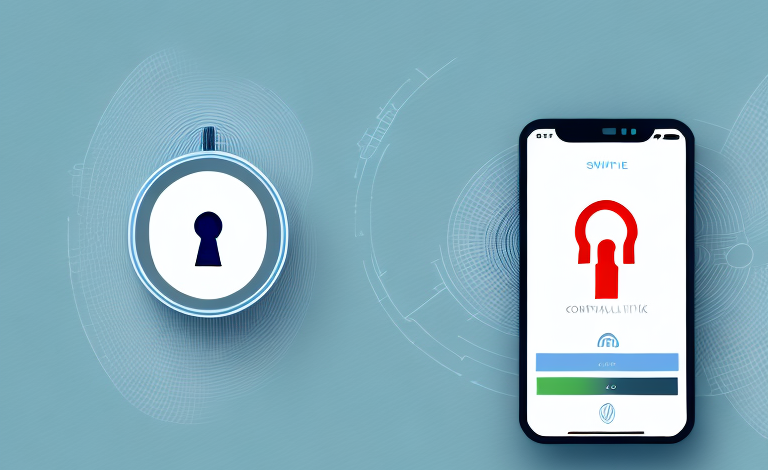Apple’s Face ID technology on the latest iPhone models has been praised for its convenience and security. However, there have been concerns about the possibility of the biometric authentication feature being hacked. In this article, we will explore the technology behind Face ID, how it works, its potential weaknesses, biometric hacking techniques, methods for hacking Face ID, and the risks associated with using facial recognition technology. We will also discuss Apple’s response to potential security concerns with Face ID and provide best practices for securing your iPhone and protecting your data with Face ID.
The technology behind Face ID
Face ID uses a combination of hardware and software components to accurately identify and authenticate the user’s face. The TrueDepth camera on the front of the iPhone captures a 3D image of the user’s face using infrared light. The data from the camera is sent to the Secure Enclave, a special chip in the iPhone that stores the user’s biometric information securely. The software then compares the captured facial features with the stored information in the Secure Enclave to authenticate the user’s identity.
One of the key advantages of Face ID over traditional fingerprint authentication is that it is more secure. The chances of someone else being able to unlock your phone using their face are extremely low, as the technology is designed to recognize the unique features of your face. Additionally, Face ID is able to adapt to changes in your appearance, such as wearing glasses or growing a beard, ensuring that you can still access your phone even if your appearance changes over time.
Another benefit of Face ID is that it is incredibly fast and convenient. With just a glance, you can unlock your phone, access secure apps, and make purchases using Apple Pay. This eliminates the need to enter a passcode or use your fingerprint, saving you time and hassle throughout the day. Overall, Face ID is a powerful and innovative technology that is changing the way we interact with our devices.
How does Face ID work?
When the user glances at the iPhone, the TrueDepth camera captures over 30,000 infrared dots to create a detailed 3D map of the face. It then uses machine learning algorithms to identify distinctive facial features such as the distance between the eyes, nose, and mouth, and the shape of the face. The software also takes into account changes in appearance due to facial hair, glasses, or hats. The user’s face can be recognized even if they are wearing sunglasses or a face mask, as long as their eyes and mouth are visible.
One of the key benefits of Face ID is its ability to adapt to changes in the user’s appearance over time. For example, if the user grows a beard or changes their hairstyle, Face ID will still be able to recognize them. This is because the machine learning algorithms used by Face ID are constantly learning and updating their understanding of the user’s face.
Another advantage of Face ID is its security. Unlike a passcode, which can be shared or guessed, Face ID is unique to each individual user. Additionally, Face ID requires the user’s attention and cannot be unlocked while the user is asleep or looking away. This makes it much more difficult for someone to gain unauthorized access to the user’s device.
Is Face ID more secure than Touch ID?
Face ID is designed to be more secure than Touch ID, as it is less likely to be fooled by fake fingerprints or rubber masks. The error rate for Face ID is 1 in a million, compared to 1 in 50,000 for Touch ID. However, there are some potential weaknesses that could make Face ID less secure in certain situations.
One potential weakness of Face ID is that it may not work as well for identical twins or siblings who look very similar. This is because the facial recognition technology used by Face ID relies on unique facial features, such as the distance between your eyes and the shape of your nose. If two people have very similar facial features, Face ID may have a harder time distinguishing between them.
Another potential weakness of Face ID is that it may not work as well in low light or bright sunlight. This is because the infrared sensors used by Face ID to scan your face may have a harder time detecting your facial features in extreme lighting conditions. In these situations, you may need to adjust your position or lighting to get Face ID to work properly.
The potential weaknesses of Face ID
One potential weakness of Face ID is that identical twins or family members who resemble each other closely may be able to unlock each other’s iPhones. The technology may also struggle to recognize faces in low light or under certain angles. Another challenge is that some users may intentionally or unintentionally train Face ID to recognize a distorted or altered facial image, which could be used to bypass the authentication feature.
Additionally, there have been concerns raised about the security of Face ID. While Apple claims that the facial recognition data is stored securely on the device and not shared with third parties, there is still a risk of hackers accessing this data. In 2017, a Vietnamese security firm claimed to have bypassed Face ID using a 3D-printed mask. While this method is not practical for most hackers, it does highlight the need for continued vigilance in protecting personal data.
Biometric hacking techniques
Biometric hacking refers to the use of techniques to bypass or fool biometric authentication features. Some of the common techniques include the use of fake fingerprints, printable masks, or deepfake videos that simulate the user’s face. These methods require access to the user’s biometric data, which can be obtained through various means such as physical theft, social engineering, or hacking into a database.
One of the most concerning aspects of biometric hacking is that unlike passwords or PINs, biometric data cannot be changed. Once a hacker has obtained a user’s biometric data, they can use it to gain access to sensitive information or locations indefinitely. This has led to increased efforts to develop more secure biometric authentication methods, such as multi-factor authentication that combines biometrics with other forms of authentication, or liveness detection that can detect whether the biometric data being presented is from a live person or a fake.
Methods for hacking Face ID
While there have been some demonstrations of successful Face ID hacks using fake masks or 3D printed faces, these scenarios are relatively rare and require significant resources and expertise. In most cases, it is unlikely that an average attacker would be able to bypass Face ID without access to the user’s biometric data. To minimize the risk of unauthorized access, users should keep their iPhone secure and protect their biometric data from being stolen or compromised.
However, researchers have also discovered that Face ID can be tricked by identical twins or siblings who look very similar. This is because the facial recognition technology used by Face ID relies on analyzing the unique features of a person’s face, such as the distance between their eyes and the shape of their nose. If two people have very similar facial features, it can confuse the system and allow unauthorized access.
Another potential vulnerability of Face ID is that it can be fooled by certain types of lighting conditions. For example, if the user is in a dimly lit room or standing in direct sunlight, the facial recognition technology may not work as effectively and could potentially allow unauthorized access. To mitigate this risk, users should ensure that they are in a well-lit area when using Face ID and avoid using it in direct sunlight.
The risks associated with using facial recognition technology
Facial recognition technology has raised privacy and security concerns due to its potential for misuse or abuse. Critics argue that the widespread use of facial recognition could lead to mass surveillance, discrimination, or false accusations. There are also concerns about the accuracy and reliability of facial recognition systems, which can result in false positives or false negatives. Users should be aware of these risks and exercise caution when using facial recognition technology.
Another risk associated with facial recognition technology is the potential for hacking or data breaches. If a facial recognition system is not properly secured, it could be vulnerable to cyber attacks, which could compromise sensitive personal information. This could lead to identity theft or other forms of fraud.
Furthermore, there are ethical concerns surrounding the use of facial recognition technology. Some argue that it violates individuals’ right to privacy and could be used to target specific groups or individuals. There are also concerns about the potential for bias in facial recognition systems, which could result in discrimination against certain groups of people.
Apple’s response to potential security concerns with Face ID
Apple has implemented various security features to protect Face ID from hacking attempts. The biometric data is encrypted and stored securely in the Secure Enclave, which is isolated from other parts of the iPhone and cannot be accessed remotely. Face ID also requires attention detection, which means that the user must be looking directly at the camera for the biometric authentication to work. In addition, users can enable two-factor authentication to further secure their iPhone and iCloud account.
Furthermore, Apple has stated that Face ID is designed to be more secure than Touch ID, their previous biometric authentication system. According to Apple, the chance of a random person being able to unlock your iPhone with Face ID is approximately 1 in 1,000,000, compared to 1 in 50,000 for Touch ID. Apple has also stated that they have worked with professional mask makers and makeup artists to ensure that Face ID cannot be fooled by masks or other facial replicas.
Best practices for securing your iPhone and protecting your data with Face ID
To ensure the maximum security of your iPhone and protect your data with Face ID, follow these best practices:
- Enable a strong passcode in addition to Face ID to prevent unauthorized access.
- Keep your iPhone updated with the latest software and security patches.
- Use two-factor authentication to add an extra layer of security to your account.
- Avoid sharing your biometric data or allowing others to use your iPhone’s Face ID.
- Be aware of your surroundings when using Face ID in public and adjust the settings to minimize the risk of unauthorized access.
By following these best practices, users can enjoy the convenience and security of Face ID without compromising their privacy or data security.
Another important best practice for securing your iPhone and protecting your data with Face ID is to enable the “Erase Data” feature. This feature will automatically erase all data on your iPhone after 10 failed passcode attempts, providing an additional layer of protection against unauthorized access.
It is also recommended to use a VPN (Virtual Private Network) when connecting to public Wi-Fi networks. This will encrypt your internet traffic and protect your data from potential hackers or eavesdroppers.



